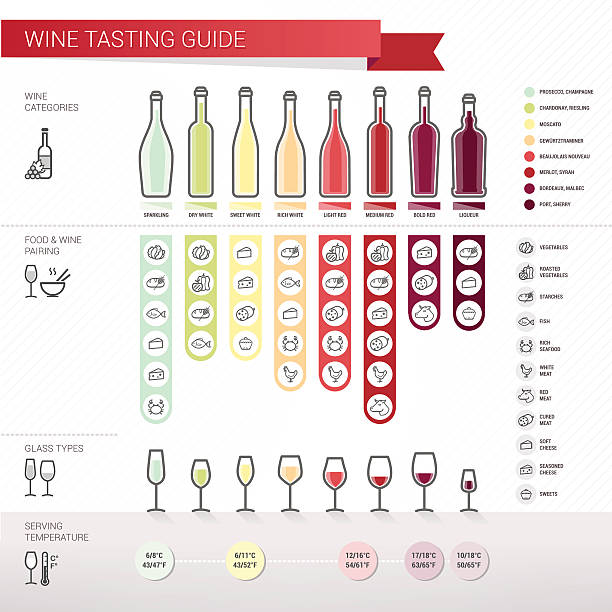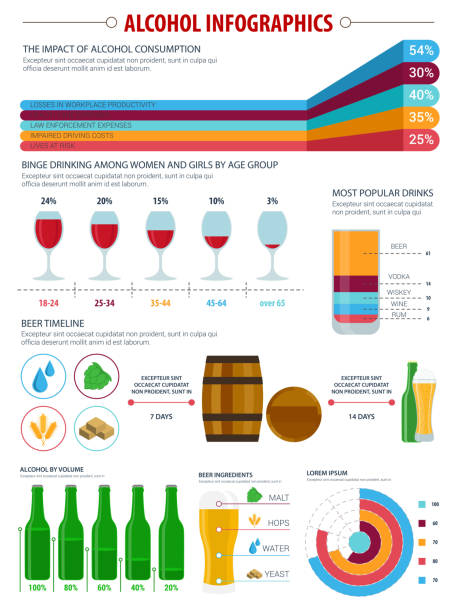Begin your whiskey exploration by focusing on a classic choice: Scottish single malt from the Speyside region. Renowned for their smooth and rich flavor profiles, Speyside whiskies often present notes of honey, vanilla, and ripe fruits. Brands such as The Macallan and Glenfiddich are exemplary introductions to this region’s offerings, showcasing the harmonious balance of sweetness and complexity. For a more diverse experience, consider exploring various expressions within a brand to grasp the nuances that each bottle can deliver.
Next, broaden your horizons with Irish whiskey, particularly those from the Midleton distillery. Known for their triple distillation process, Irish whiskies frequently feature lighter, more floral notes compared to their Scottish counterparts. Brands like Jameson and Redbreast offer a quintessential taste of Ireland’s whiskey craftsmanship, with smooth finishes and inviting spice undertones. Sampling different whiskey styles such as single pot still and blended varieties will illuminate the versatility and traditions of Irish production methods.
Turning your attention to the other side of the Atlantic, American bourbon from Kentucky stands as a bold contrast. With its unique blend of corn-based sweetness and charred oak aging, bourbon delivers robust flavors that range from caramel and vanilla to rich spice and oak. Producers such as Maker’s Mark and Buffalo Trace provide excellent examples of this quintessentially American spirit, emphasizing craftsmanship and historical significance in each sip. Exploring small batch or single barrel offerings can further enhance your appreciation for the distinct characteristics this region imparts.
Whiskey 101: Understanding the Basics

Identifying the basic types of whiskey forms the foundation for any whiskey enthusiast. Begin with Scotch, made in Scotland primarily from malted barley. The Highland region often delivers a lighter, more floral flavor, whereas Islay is known for its peaty, smoky taste.
Transition to Irish whiskey, distinguished by its triple distillation process, resulting in a smooth, slightly sweet profile. Look for brands like Jameson or Bushmills to explore classic Irish flavors.
Bourbon, uniquely American, requires at least 51% corn in its mash bill and must be aged in new charred oak barrels. Kentucky is the heart of bourbon production, providing rich, caramel notes with a hint of vanilla.
Rye whiskey, gaining popularity, must consist of at least 51% rye grain and offers a spicier, more robust taste than bourbon. Canadian whisky, often labeled as rye in Canada, typically features a smoother, lighter character.
Japanese whiskey, inspired by Scotch traditions, balances precision and craftsmanship, frequently highlighted by a delicate, harmonious style. Consider exploring renowned distilleries like Yamazaki or Nikka for a taste of Japan’s artistry.
Finally, pay attention to labels indicating single malt or blended whiskies. Single malt, made from malted barley and produced at a single distillery, presents pure, specific character. Blended whiskey combines multiple types, offering complexity with consistent flavors.
Exploring Whiskey Regions

Begin by sampling Scotch whiskies from Scotland, known for their diverse flavor profiles. Each region within Scotland offers something unique:
- Islay: This region is famous for its peaty and smoky whiskies. Brands like Laphroaig and Ardbeg exemplify these bold flavors.
- Speyside: Known for its sweet and fruity whiskies. Glenfiddich and Glenlivet are popular choices that highlight the region’s signature taste.
- Highlands: Offers a mix of flavors from mild and floral to rich and robust. Try Glenmorangie to experience a typical Highland whisky.
- Lowlands: Known for their lighter and more delicate whiskies. Auchentoshan provides a smooth option for those exploring this region.
- Campbeltown: Once a powerhouse in whisky production, this region offers limited but unique options like Springbank, combining salt and peat influences.
After Scottish whiskies, explore the Irish whiskey scene, characterized by its triple distillation process, leading to smooth and approachable spirits:
- Dublin: Dublin whiskies like Teeling are known for their creamy texture and subtle spice.
- County Cork: Home to Jameson, whose smooth, barley-rich profile makes it a staple in Irish whiskey tasting.
Next, venture into American whiskey regions to taste the variations of bourbon and rye:
- Kentucky: The heart of bourbon production, offers rich, caramel-flavored spirits. Maker’s Mark is a great example of a classic Kentucky bourbon.
- Tennessee: Known for Lincoln County Process filtered whiskey. Jack Daniel’s epitomizes this region with its smooth finish.
- Indiana: The largest rye whiskey producer in the U.S. Try a bottle from MGP for a spicy and robust character.
Finally, Japanese whisky has gained international recognition for its elegant balance and precision:
- Yamanashi: Home to Hakushu, which provides a fresh, herbal taste infused by the surrounding forests.
- Osaka: Suntory’s Yamazaki offers complex whiskies with a perfect blend of fruit and spice.
Explore these regions, and you’ll discover the vast array of flavors whiskey has to offer. Each place tells its own story through its distinct production methods and environment, enriching every tasting experience.
Distinguishing Scotch from Irish Whiskey
Start by examining the ingredients and production processes. Scotch typically uses malted barley, while Irish whiskey often combines both malted and unmalted barley. The traditional method of triple distillation in Irish whiskey results in a smoother taste compared to Scotch, which is usually distilled twice.
Aging in oak barrels is another key factor. Both must age for a minimum of three years, but Scotch often stays in the barrel for longer, which imparts more complex flavors. Peat also separates many Scotches from their Irish counterparts, as some Scotch whiskies possess the robust, smoky flavor of peat, whereas Irish whiskey generally avoids it.
When it comes to geographic origin, Scotch is exclusively produced in Scotland, with distinct regions like Speyside and Islay contributing unique regional characteristics. In contrast, Irish whiskey hails from Ireland, primarily from areas like County Cork and County Antrim.
Finally, pay attention to the spelling. Irish whiskey includes an “e,” while Scotch whisky does not. This simple difference serves as a helpful reminder when selecting your dram.
A Deep Dive into American Whiskey: Bourbon vs. Rye
When choosing between Bourbon and Rye, begin with the grains. Bourbon must contain at least 51% corn, offering a sweet, rich flavor often highlighted by vanilla and caramel notes. Meanwhile, Rye whiskey, made with a minimum of 51% rye grain, delivers a spicier, more robust taste that brings warmth and a hint of spiciness in every sip.
Consider the aging process next. While both are aged in new charred oak barrels, bourbon often ages between two to four years, absorbing a distinctive sweetness and smoothness from the wood. Rye, on the other hand, can mature in a similar timeframe but tends to maintain its bold character, making it a favorite for those who appreciate a drier finish.
When it comes to mixing cocktails, both types of whiskey serve different roles. Bourbon’s sweetness complements cocktails like an Old Fashioned or a Mint Julep, where the whiskey’s flavors blend seamlessly with sugar and bitters. Rye’s spiciness shines in classics like a Manhattan or a Sazerac, adding a punch that balances the complexity of the cocktail.
Finally, pay attention to personal preference. Bourbon’s smooth, sweeter profile attracts those new to whiskey or who prefer a softer drink. Rye appeals to experienced palates that enjoy complex, spicy notes. It’s always worth sampling a variety of both to find the unique characteristics that best suit your taste.
The Unique Characteristics of Japanese Whiskey
Explore the delicate balance and meticulous craftsmanship in Japanese whiskey, where precision and quality take precedence. Distilleries like Yamazaki and Nikka have carved a niche by mastering the art of blending. Japanese whiskey often emphasizes harmony, incorporating techniques derived from Scotch traditions but with distinct local twists.
Water source plays a crucial role in defining the flavor profile of Japanese whiskey. The pristine Japanese climate influences the maturation process, allowing for unique seasonal interactions in the cask. Expect subtle flavors and a smoothness that speaks of refined aging techniques. A single sip might reveal notes of honey, dried fruit, or even a hint of smoke.
Barrel innovation is another defining factor. Mizunara oak, a species native to Japan, imparts complex flavors, such as sandalwood or coconut. This wood ages whiskey differently than traditional barrels, adding to the exclusivity and uniqueness of the finished product. This dedication to uniqueness extends to blending practices that often use a wide variety of malt and grain spirits, setting Japanese whiskey apart through complexity and depth.
Japanese whiskey is not just for drinking; it’s an experience that encourages the appreciation of its intricate flavors. As you explore, note the influence of Japanese minimalism in its packaging and presentation, reflecting the philosophy of ‘less is more’–an ethos translating seamlessly into the restrained yet profound tasting experience.
Canadian Whiskey: What Sets It Apart?
Consider Canadian whiskey if you’re seeking a spirit that complements both cocktails and neat sipping. Its distinct smoothness comes from its unique blend of grain spirits, often incorporating a significant amount of rye, which imparts a signature spice and complexity. The hallmark of Canadian whiskey production is its lenient regulations, allowing distillers to experiment with flavors more freely than in other countries. It’s common to include flavoring whiskies, creating diverse taste profiles with subtle nuances.
Rather than specifying specifics of oak casks, Canadian regulations permit distillers to use a variety of barrels, resulting in a range of flavors from caramel sweetness to light fruitiness. Another characteristic is the tradition of blending. Canadian whiskey often combines different aged spirits, leading to well-balanced whiskies with deep character.
Temperature plays a role too; Canadian climates encourage a slower aging process, allowing the whiskey to develop richness over time. The Canadian approach to whiskey demands both creativity and precision, setting it apart through its versatility and distinct identity. If exploring a whiskey with history, diversity in flavor, and unmatched blendability, Canadian whiskey is a perfect choice.
Styles and Flavor Notes of Whiskey

Distinguish between whiskey styles by considering each region’s unique characteristics. Scotch whisky often comes with a smoky profile, thanks to the use of peat during malting. Explore the Highland Scotch for a balanced mix of floral and fruit notes, while Islay whiskies bring intense smoky flavors.
Bourbon, predominantly from Kentucky, offers sweet caramel and vanilla tones, derived from aging in new charred oak barrels. Rye whiskey delivers a spicier punch, with peppery and fruity undertones, perfect for classic cocktails like a Manhattan.
Irish whiskey is triple distilled, creating a smooth, clean taste with hints of honey and citrus. Enjoy it neat or in an Irish Coffee for the perfect twist.
Japanese whiskey, inspired by Scotch traditions, stands out with its delicacy and precision, producing light, refined flavors with floral and sometimes slightly smoky characteristics. Discover brands like Hibiki or Yamazaki for exceptional examples.
Corn whiskey, less common but noteworthy, boasts a sweeter profile due to its high corn content. It’s best for those seeking a straightforward, uncomplicated sip. Understanding these styles and their flavor notes not only enhances appreciation but also aids in choosing the perfect whiskey for any occasion.
Unpacking the Flavor Profile of Single Malt Whiskey
Focus on specific characteristics when exploring single malt whiskey to appreciate its complexity. Each single malt offers a unique blend of flavors, often attributed to distinct production methods and regional influences. Here are some key aspects to consider:
- Peaty and Smoky: Whiskeys from Islay are renowned for their signature peaty and smoky flavors, a result of using peat in the malting process. Lovers of bold, intense tastes should explore options from this region.
- Fruity and Floral: Speyside whiskeys typically present a sweeter profile, often exhibiting notes of apple, pear, and honey. These are excellent choices for those who enjoy a softer and more approachable whiskey.
- Rich and Oily: Highland whiskeys offer a broad spectrum of flavors but often include richer, more robust undertones. Expect a diverse taste journey ranging from mild fruitiness to deep spiciness.
- Salty and Maritime: Coastal whiskeys, such as those from islands like Jura and Skye, often have a distinctive saline edge. This sea-salt influence provides an intriguing layer to the flavor experience.
- Spicy and Bold: Whiskeys from Campbeltown often exhibit a spicy and slightly briny character, attributed to their unique microclimate and production techniques. Fans of strong flavors might find these particularly satisfying.
Consider the cask aging process as well. Sherry, bourbon, and wine casks impart additional flavors, such as vanilla, nutmeg, or dried fruits. Experiment with different single malts to discover a personal preference within these nuanced profiles.
The Sweet and Smoky Notes of Peated Whiskey
Consider experimenting with a glass of Lagavulin 16-Year-Old for an introduction to peated whiskey. This iconic Scotch offers a harmonious blend of sweet vanilla, dried fruit, and smoky peat. Often, the peat level is measured in phenolic parts per million (PPM) to understand its intensity, with Lagavulin typically hitting around 35-40 PPM, delivering a balanced yet distinctive flavor.
Now, let’s explore the dynamic flavors of peated whiskey from different regions:
| Region | Character | PPM |
|---|---|---|
| Islay | Rich smoke with maritime notes | 20-50 |
| Highland | Soft peat with heather and honey | 10-20 |
| Speyside | Delicate peat with fruity undertones | 2-5 |
The sweetness in peated whiskey often comes from the casks used for aging. American oak barrels, previously filled with sherry or bourbon, enrich the spirit with caramel and chocolate notes. Embrace sipping peated whiskey with a drop of water to open up its complex profile, revealing layers of smoke intertwined with sweetness, making each sip an intriguing experience.
Grain Whiskey: A Versatile Component
Try grain whiskey to explore the full potential of this unique spirit. Unlike its malt counterpart, grain whiskey often uses grains like corn, wheat, or barley, making it a flexible base for blends. Distilled in column stills, it’s lighter and more neutral, highlighting how versatile it can be in crafting blended whiskeys. Add it to your tasting to appreciate its subtlety.
Grain whiskey’s popularity is rising in both blends and standalone spirits. Not confined to blends, it now showcases its character with citrus and vanilla undertones, presenting an uncomplicated drinking experience. Opt for single-grain bottles from renowned distilleries to experience this shift.
Balance is one of grain whiskey’s strengths. It tempers the bold notes of malt whiskeys to create smooth blends. A prime example is Scotland’s blended whiskeys, where grain whiskey brings cohesion. Consider how it interacts with the other components in popular blends.
Low production costs make grain whiskey a staple for distilleries. Its streamlined distillation allows for scale, often reflecting in the price and availability of blended options. Emphasize its role in making whiskey accessible while understanding its contribution to the industry.
Experiment with grain whiskey beyond traditional sipping. Its subtlety suits cocktails incredibly well, offering versatility without overpowering mixings. Replace vodka in cocktails with grain whiskey for a novel twist, exploring ways it complements various flavors.
Discover local grain whiskey producers; they often showcase regional grain varieties and techniques. These unique expressions provide insight into their geographical and historical contexts. Seek out craft distilleries emphasizing sustainability in production for added intrigue.
Q&A:
What are the main regions known for whiskey production, and how do they differ?
The primary whiskey-producing regions include Scotland, Ireland, the United States, Canada, and Japan. Each region has its unique characteristics and production methods. Scotland is renowned for its diverse range of single malts, with distinct regional variations such as smoky Islay whiskies or the lighter Speyside whiskies. Ireland typically produces smoother whiskeys, often triple-distilled. The United States, particularly Kentucky and Tennessee, is famous for bourbon and Tennessee whiskey, known for their sweeter profiles due to the use of corn. Canada is known for its smooth, light rye whiskies, while Japan has gained acclaim for its meticulous production techniques and well-balanced flavors.
Why is Scotch whisky spelled without an ‘e’ while others often have it?
The spelling difference between ‘whisky’ and ‘whiskey’ is primarily geographic. In Scotland, Canada, and Japan, the term is spelled ‘whisky,’ whereas in Ireland and the United States, it is commonly spelled ‘whiskey.’ This distinction is a result of historical preferences and marketing decisions that have persisted over time.
How does the climate of a region affect the taste of whiskey?
The climate plays a crucial role in the maturation of whiskey. In Scotland, the cool and damp climate slows the aging process, often resulting in more subtle and complex flavors developed over time. In contrast, the warmer climate of Kentucky accelerates the aging process, leading to bourbons with bolder and sweeter profiles, as the whiskey gains more character from the barrels in a shorter timeframe. The temperature swings in different regions contribute to how whiskey interacts with the wood barrels, significantly influencing the final taste.
What makes Japanese whiskey different from other types?
Japanese whiskey is known for its precision and craftsmanship, often taking inspiration from Scottish methods. What sets it apart is the attention to detail and wide range of flavor profiles, often blending smokiness, citrus notes, and floral elements. Japanese distillers focus on balance and harmony, resulting in a refined and distinctive whiskey style that has gained international acclaim for its quality.
Can you explain the significance of regional water in the production of whiskey?
Water is a fundamental component in whiskey production, affecting everything from mashing to distillation to dilution before bottling. Regional water sources often have distinct mineral compositions, influencing the characteristics of whiskey. For example, the soft waters in Scotland aid in creating smooth and subtle whiskies, while the limestone-rich waters of Kentucky contribute to the sweet and robust flavors in bourbon. The mineral content and purity of water are essential in developing the final taste profile of the whiskey.
What are the main whiskey-producing regions covered in the article, and how do their climates affect the taste of whiskey?
The article covers several key whiskey-producing regions, including Scotland, Ireland, the United States, Canada, and Japan. Each region has its unique climate and environmental influences, which impacts the character and flavor of the whiskey. For instance, Scotland’s cool and moist climate contributes to the slow aging process, resulting in complex and robust flavors. In contrast, American whiskeys, such as those from Kentucky, are exposed to more variable temperatures, leading to more rapid aging and a bolder taste profile. Japan’s approach often follows a meticulous harmonization of flavors, influenced by both traditional practices and unique climatic conditions, offering a delicate and refined whiskey style.
How do regional regulations impact the production styles of whiskey in different regions?
Regulations play a significant role in defining whiskey production in various regions, influencing both methods and final produced styles. In Scotland, strict legal definitions dictate what can be considered Scotch, including aging for a minimum of three years in oak casks and using only specific ingredients. This contrasts with the United States, where regulations around Bourbon require at least 51% corn in the mashbill and new charred oak barrels for aging, contributing to its distinctive sweeter flavor. Ireland, on the other hand, is known for its triple distilled smooth whiskeys, with regulations that allow for slightly broader interpretations in production methods compared to Scotland. These regulations help preserve regional characteristics and ensure quality and authenticity in whiskey production.


